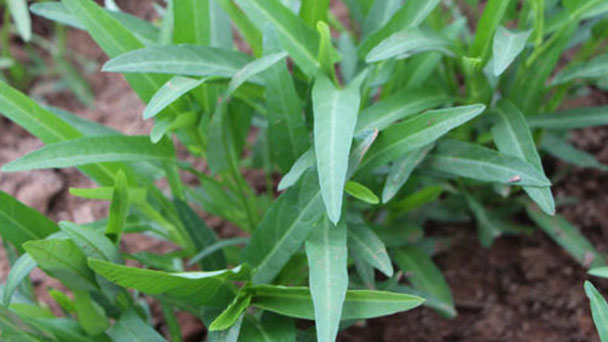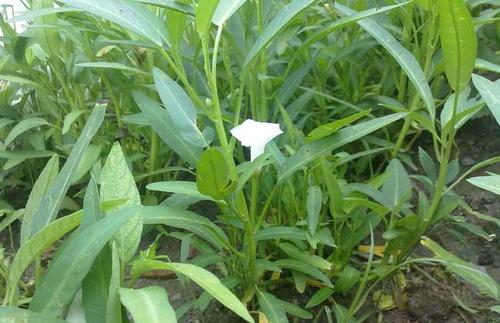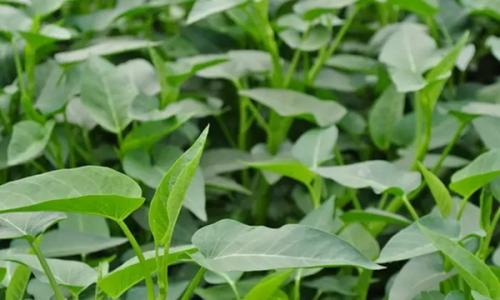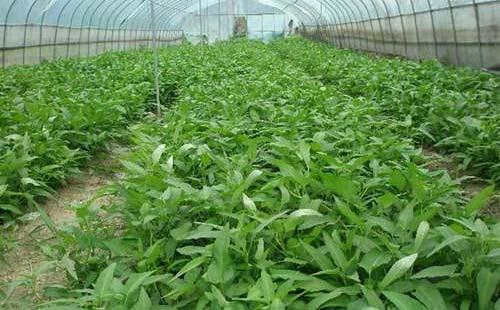How to grow Water spinach
Written by Maggie
Nov 08 2021

Water spinach is a type of amphibious plant that can live in both dry and paddy fields, but thrives on large amounts of Water. It is best grown in fields near fertile paddy fields or livestock sheds where there is regular drainage Water. It can also be grown on more fertile dry land, where it promotes more seed, so it can be cultivated on dry land when seed is retained.
Water spinach can be adapted to the soil, and is resistant to both fertilizer and soil and to a certain extent to poverty, but under artificial cultivation, organic loam or loam rich is the best choice for high yield. Water olive won't tolerate drought.
Water spinach seeds germinate at about 15℃, the suitable temperature for growth is 20 ~ 35℃, and sprout quickly when the initial temperature of germination reaches above 30℃. Sunshine to be sufficient, but the adaptability of close plants is strong, is a short sunshine type, especially cane beach on the short sunshine requirements. It is difficult to bloom, and often used asexual reproduction.
There are two ways of growing Water spinach, soil or water. Soil planting is the main crop in north China. The early cultivation was mainly soil planting, and the middle and late mature cultivation was mostly water planting.

Water Spinach Soil Growing
(1) Water Spinach seed planting: Dry Water Spinach can be used for direct seeding or transplanting. Direct broadcast in the open field is conducted in drill or on demand, and the row spacing is 30 cm ~ 35 cm. Point spacing 15 cm ~ 20 cm, each point seed 2, 3. The sowing amount of direct seeding area is about 10kg, when the seedling height is about 3cm, the seedlings can be divided in batches, and the final planting distance is 15-20cm.
Transplant seedlings with flatbed seedlings, sowing. Each acre seedbed uses 18 kilograms or so, transplanting 10 ~ 15 acre.
The skin of a Water spinach is thick and hard, and it absorbs Water slowly. In early spring, the temperature is low and the seedlings emerge slowly. In case of low temperature and rainy weather, it is easy to cause rot, so should be soaked before sowing (about 24 hours) to accelerate germination, after sowing fine soil 1 cm thick, so as to facilitate the germination and root of seeds, and covered with plastic film to keep warm, until seedlings are uncovered and then removed.It appears after 5 ~ 7 days. When the seedling height is 15 cm ~ 20 cm, transplant large seedlings in batches. The row spacing of the fixed plants was about 15cm ~ 20cm, with 1 ~ 2 plants per hole.
(2) Asexual cutting: Generally can not blossom and fruit varieties, can only carry out asexual cutting propagation. If you want to grow your own Water olive, you can easily become an asexual. Specific methods vary. Some places will be the year before the good plant stump directly planted in the field, seedlings grow more than 35 cm for pressing, in order to send new roots, to promote new seedlings. After often pressing, until full of the whole field, collect in batches by stages again appear on the market or transplanting. Also, the vine stems left in the previous year can be placed in a warm seedling bed of 20℃ ~ 25℃ to accelerate the bud. When the seedling height is 10 cm ~ 20 cm, the cuttings can be made in the warm and fertile soil under the leeward to the sun to expand the propagation coefficient, and then the cuttings can be made in Honda.
(3) Fertilizer and water management: Soil planting should choose low terrain, moist and fertile soil plot cultivation. After planting the live plants, topdressing should be applied in addition to intertilling and weeding to improve the ground temperature. After planting for 1 month, enter the summer, the temperature rises, plant growth is rapid, fertilizer and water needs are big. Water spinach needs diligent topdressing, diligent watering.
The fertilizer is mainly made of thin human excrement and urine and quick nitrogen fertilizer. The concentration of top fertilizer should not be too high to avoid burning seedlings. The principle of weighing light weight should be mastered. The soil should always be kept moist. In particular, in the high temperature drought season, watering enough water. In order to promote the rapid growth of stems and leaves and early harvest shoots to market, 20ppm gibberellin was used to spray the leaves of the seedlings, spraying once every 7 ~ 10 days, 2 ~ 3 times in total.

Water Spinach Water Growing
There are either shallow Water plants or deep Water legumes.
Shallow water cultivation is the use of shallow paddy fields or shallow ponds. Before planting, put out the water, prepare the ground, remove weeds, and then cut them. The cuttings are about 20 cm long, 2 ~ 3 sections are inserted diagonally according to the distance of about 26 cm, and the depth is about 3 cm, and the seedlings' leaves are exposed to the water. After cutting, in order to improve the soil temperature, conducive to the survival of the roots, the water layer should not be too deep, generally to maintain 6 cm ~ 9 cm for the appropriate.
The best way to plant deep Water is to pound a piece of Water at a distance of about 15cm over a piece of plait vine or straw rope. To make the weight of the two sides of the rope equal, the seedling head and tail should be rotated.
Vines or straw rope 10 meters long 3 meters, both ends of the circle, set on the edge of the stake. In this way, seedlings can rise and fall with the water surface and floating. For ease of management, rattan strips or straw ropes in the water can be arranged in large or small rows. The two lines in the large row are separated by 1 meter, and the two lines in the small row are separated by 30 cm.
Water spinach grows well in fertile, open Water areas, and generally does not fertilize. In the lack of fertilizer in stagnant water, it should be fertilized. When the water temperature is high, harvest once every 10 ~ 15 days, after cool days, harvest once every 20 days. The harvesting method is one's ability. The top of floating Water spinach is very tender, but the yield is not high due to inconvenient fertilization. To grow late stem leaf senescence, and autumn leaf vegetable species has been more, can laissez - faire growth, as green feed. The harvest will be finished before the first frost.

Read Next:
15 Fall Vegetables to Plant for Your Autumn Garden
Latest Updated
- Benefits of Bugleweed - 7 Science-backed Health Benefits
- Bugleweed Dangers & Side Effects - Is It Poisonous?
- How to Plant Evergreen Trees - What You Should Know
- When to Plant Evergreens - Grow Guide for Evergreen Trees
- 12 Wonderful Evergreen Shrubs for Your Garden
- 12 Popular Evergreen Plants with Pictures for Beginners
- When And How To Prune A Lilac Bush Like a Pro
- How to Grow & Care for Lilac Vine (Hardenbergia Violacea)
- Japanese Lilac Tree (Syringa Reticulata) Care & Propagation Guide
- Shumard Oak Pros and Cons - What to Know
Popular Articles
- Winter maintenance of Antirrhinum Majus
- How to Grow Terminalia Mantaly Tree
- How to Grow and Care for Crossostephium Chinense
- How to grow Antirrhinum Majus in spring
- Peristeria Elata (Dove Orchid) Profile: Info & Care Guide
- Underwatered Snake Plant (Sansevieria Trifasciata) - Signs And How To Fix
- How to Care for Brazilian Jasmine Plant (Mandevilla Sanderi)
- How to Grow & Care for Graptopetalum Purple Delight in Summer
- Rosa Chinensis (China Rose): Plant Growing & Care Tips
- How to Care for Baby Sun Rose (Aptenia Cordifolia)